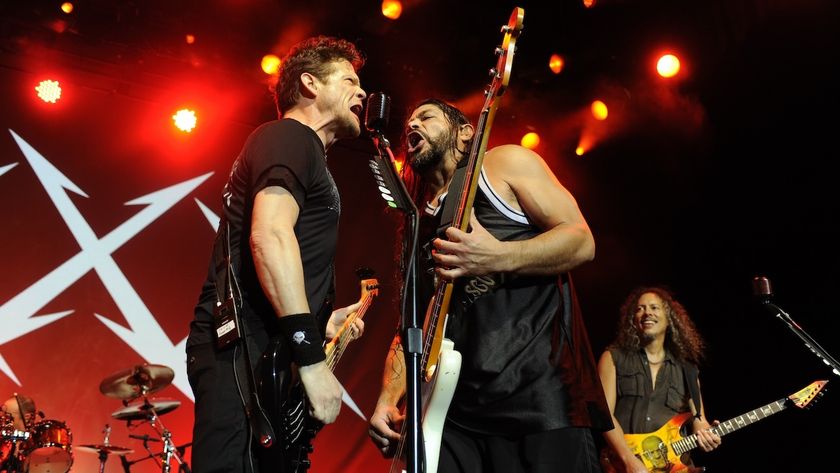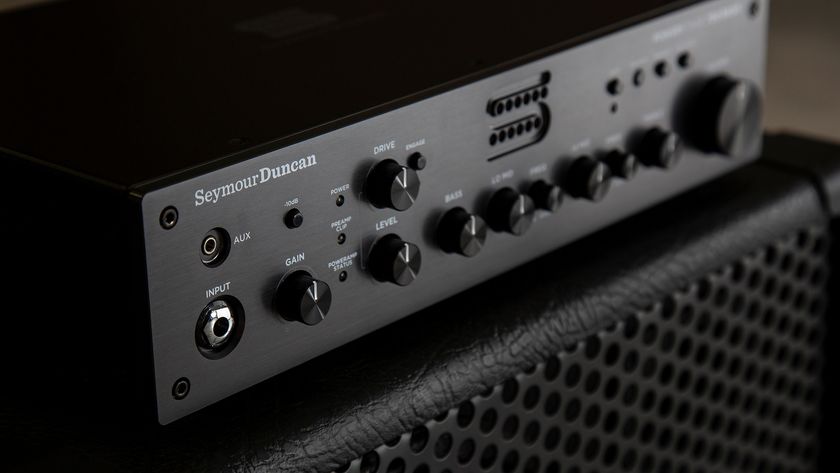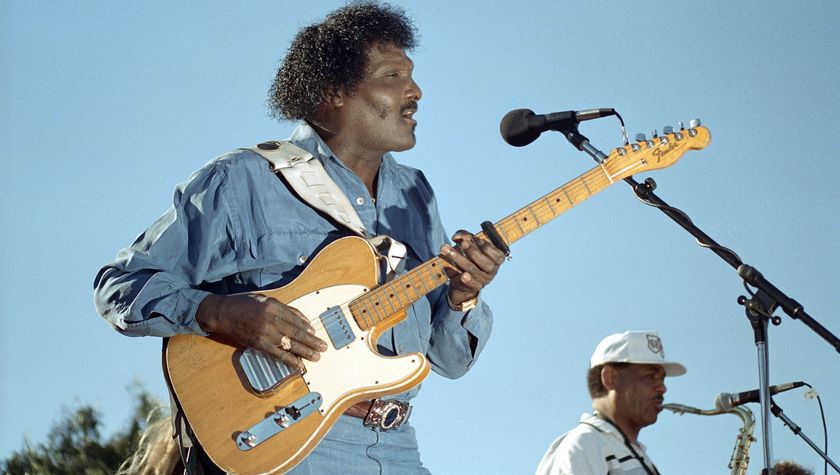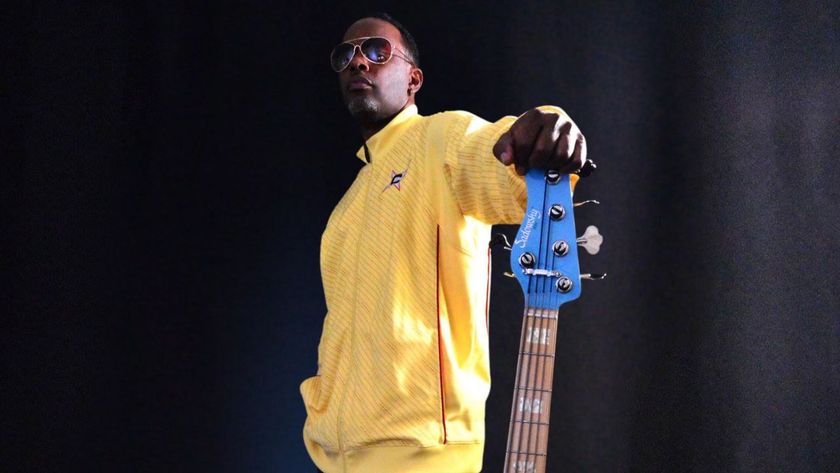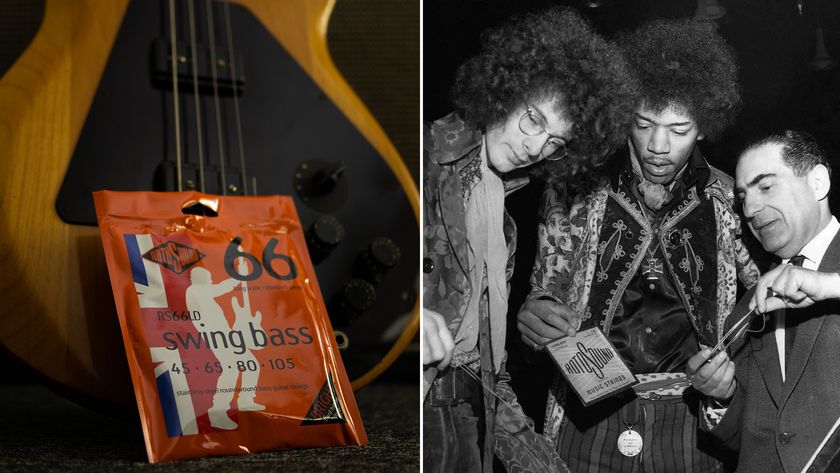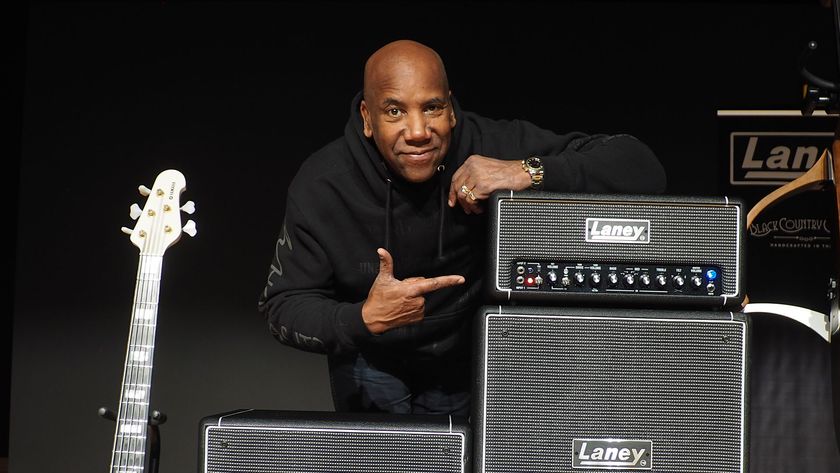“I remember trying to do pinch harmonics on a 30” Dunable in the studio… it was close to impossible. My fingers were all torn up trying!” Meet Gore. guitarist Alex Reyes – the modeler-melting Texan metal player summoning djent riffs from six-strings
The Houston metal trio’s debut EP is turning heads as Reyes summons low-tuned maelstroms into stunning structures, making the most of his producers’ songwriting experience

It’s taken 10 months for Texas’ white-hot metal trio Gore. [period intentional] to follow up their beautifully savage debut single, Pray, with an EP, A Bud That Never Blooms.
In the intervening months the band – spearheaded by vocalist Haley Roughton and supported by Alex Reyes’ colorfully vicious guitars – has seen their stock reach impressive heights.
When Reyes heard fellow Houston metal scene member Roughton was setting up a new project, he was desperate to get in her crosshairs. “I know she has that fire in her,” he says. “I wanted to be around that.”
A self-confessed djent kid with a love for thall and big guitars, Reyes was handpicked to complement Roughton’s scratched velvet vocals. Curiously, that’s seen him ditch his seven-string Ibanez AZ [as pictured] despite the low depths their tunings reach.
Instead, the EP was tracked on co-producer Caleb Freihaut’s 25.5” Balageur Espada, tuned to drop D. Reyes’ Quad Cortex shifts it down to drop F, a full octave down, and drop C beyond that.
“The lower I go on other modelers, the more body and grit I lose from my tone – especially when playing a high-gain amp,” he explains. “With the QC you can stack amp heads, so you have an amp that’s giving you the body, then another for the gain, treble and mids. Typically, I’ll have a 50-watt EVH head with EL34 tubes in there.”
Gore. have just completed their first live shows, supporting Within The Ruins, and Reyes’ Ibanez Premium AZ 242 BC was all he needed. Kitted out with Seymour Duncan Hyperion pickups, a floating Gotoh trem and gold hardware, he let the QC handle the heavy lifting.
Get The Pick Newsletter
All the latest guitar news, interviews, lessons, reviews, deals and more, direct to your inbox!
“It’s way more practical,” he says. “I’ll have a noise gate, Horizon Device’s Precision Overdrive and the pitch shifter in front of the amps, and it’s gnarly and disgusting.”
Pitch harmonics are a key part to his playing style, and he likes tight strings that he can bite into; so 11-52 gauge sets have proven tight, without being resistant to squeals. “I remember trying to do pinch harmonics on a 30” Dunable in the studio… it was close to impossible. My fingers were all torn up trying!”
Reyes feels it’s essential that bands make use of producers’ songwriting expertise – in the case of Gore., that’s Freihaut and Ben McGuiness.
“Music is fluid,” the guitarist says. “There’s never one way to do things. Ego shouldn’t be a part of it; we were in love with the music we’d created, but we want the songs to be the best versions of themselves. It’s not what’s best for me or the other musicians.”
He continues: “Every song we’ve ever come up with has come from a good chord progression. Especially Doomsday – that progression is so haunting, it sets the tone for the rest of the song.
I fell in love with Veil of Maya and Marc Okubo’s guitar playing. The Mikasa riff is unbelievable
“You can have nasty riffs in your back pocket, but it’s about finding the space for them. You don’t want to clutter the song with riff salads. The chord progression is your meat and potatoes; it’s the heart of the song that people are going to gravitate to.”
In pursuit of that approach, he became obsessed with re-voicing power chords. “They can be very vanilla,” he says. “If I’m feeling very sad I’ll try to find a way of making them more dissonant, and then I’ll start building the progression out from that one spicy chord. I’ve been training my brain to think outside the box.
“I really fell in love with Veil of Maya and Marc Okubo’s guitar playing. The Mikasa riff is unbelievable. He’s outlining the chord progression with arpeggios, and my 20-something year old brain was like, ‘Dude, that’s genius!’”
Gore.’s Angels Like You does exactly that, reeling off a genteel progression until, when it’s time to get nasty, Reyes’ rusted razor blade of a riff goes into action. Yet it never loses sight of the progression, helping find the perfect balance between blunt force trauma and harmony.
A Bud That Never Blooms is a masterstroke in uniting musical violence with towering pop hooks, and Reyes’ playing is right at the heart of it. Gore. has a sound tailor-made for success – albeit at their own teasing pace.
- A Bud That Never Blooms is out now via Spinefarm Records.
A freelance writer with a penchant for music that gets weird, Phil is a regular contributor to Prog, Guitar World, and Total Guitar magazines and is especially keen on shining a light on unknown artists. Outside of the journalism realm, you can find him writing angular riffs in progressive metal band, Prognosis, in which he slings an 8-string Strandberg Boden Original, churning that low string through a variety of tunings. He's also a published author and is currently penning his debut novel which chucks fantasy, mythology and humanity into a great big melting pot.
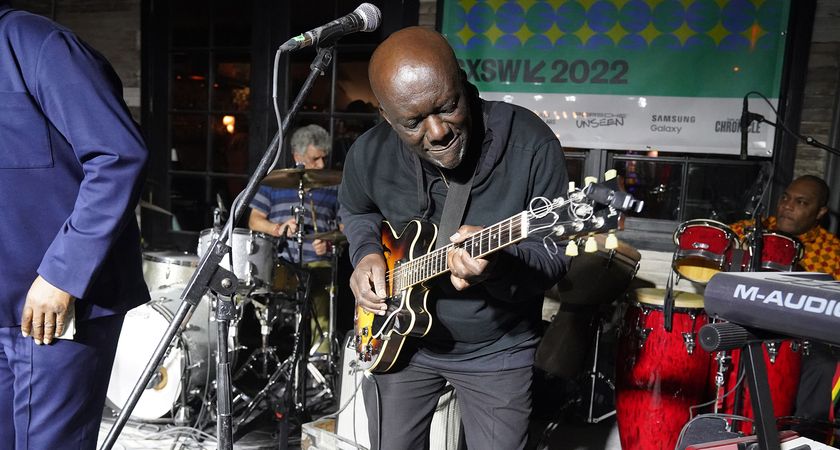
“We set out to put our thoughts and musical ideas out there, hoping they’d be appreciated. That’s proved to be true”: Sampled by Grandmaster Flash, De La Soul and the Fugees, Cymande shaped the sound of hip-hop. Now they’re back to claim their legacy
![[L-R] George Harrison, Aashish Khan and John Barham collaborate in the studio](https://cdn.mos.cms.futurecdn.net/VANJajEM56nLiJATg4P5Po-840-80.jpg)
“I got the impression that he needed to be quite forceful to get his songs onto Beatles records”: George Harrison orchestrator John Barham reflects on their shared love of Indian music and being conducted by Phil Spector



